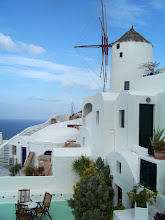It reminds me of another wonderful film, The Namesake (2006), whose opening credits is similarly stunning. The letters transform from Bengali into English with abstract paintings in the background. The blending of the two languages reflects the notion of cutural transition in the movie.
Monday, June 30, 2008
Stunning Opening Credits
Sunday, June 15, 2008
Chasing through a Favela


The Incredible Hulk is just another blockbuster movie. One thing that caught my attention is the mountain favela of Rio de Janiero in the opening sequence. The apartments are so densely packed together like piles and piles of containers. The place just looks UNREAL! I can’t imagine how people could live in such density with minimum room for trees and natural light. Apparently such a site is exotic enough for a Hollywood chase scene: the connected up-and-down rooftops, the dark and narrow alleys….
It’s not surprising that Hollywood action movies are exploring some of the poorest areas in Africa, Asia and South Africa, just to offer the viewers a fresh and different look. It instantly raises the controversial question between tourism and poorism. As a matter of fact, the favela shown in Hulk has been a tourist spot for 16 years. Is it really exciting to watch a chase in a favela like this? Will the movie bring more tourists to the slums? Or will it bring some positive attention or changes to the living environment of the residents?
Here's a related article Slum visits: Tourism or voyeurism?
Wednesday, June 11, 2008
GTF on Show


Friday, June 6, 2008
2 Great Art TV Series



Compared to the high-cost BBC series, PBS makes intriguing and informative documentaries at low budgets. A good TV series I watched recently is Art:21 which offers a great introduction into contemporary visual art. The show covers 72 influential artists living is US, including my familiar ones like James Turrell, Richard Sara, Cai Guoqiang, Maya Lin and Krzysztof Wodiczko, as well as many others I didn’t know of. The best part is seeing the work process of each artist, accompanied with the artist’s own interpretation. Each episode presents a theme by introducing 4 related artists. I can understand the advantages of doing that. But often times I found the artists’ works don’t fit into just one category. By sorting them out, it simplifies the broadness and complexity of the artist’s approach. That’s my only criticism of the show.



